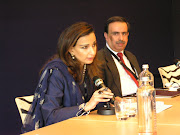Once described as the
“chhota” (little) London for its prosperity, Sopore — encased by apple orchards
— was virtually destroyed during the last two decades. Today, this town is
regaining its spirit and one of the most remarkable features is the Meraas
Mahal Museum, which captures Kashmir’s heritage and tradition.
The museum is the story of
the indomitable audacity of one person. The first woman Director of Libraries
in Kashmir, Atiqa Bano, established it over a decade ago, but it is only in the
last of couple of years that it has become well-known. The museum describes
itself as the “Centre for Preservation of Our Glorious Heritage”, and has an
impressive collection of ornaments, papier mache, dresses, coins, manuscripts
and paintings and traditional utensils.
As we sit with
Atiqa ji in the nearby College of Education that she runs, her steely spirit is
evident as she recounts the challenges she faced during the years of violent
conflict, even as she serves us ‘sheekh kebabs’ and ‘noon chai’ (salted
Kashmiri tea).
The traditional
dresses are breathtaking. Both Pandit and Muslim Pherans, along with the
accessories, are well preserved. What is evident is, however, that one woman’s
extraordinary effort requires support and help, including perhaps the services
of a professional curator.
She credits her
“success” to the blessings of Ahad Sahib, the mystical saint of Sopore who
passed away in 2010. While alive, there was no contemporary Sufi saint in
Kashmir who invited such a large following across religions, and whose powerful
gaze was often compared by his Hindu followers to the luminosity of Ramana
Maharishi’s eyes. Today, Ahad Sahib’s former home includes a shrine where
hundreds of devotees are seen every day.
Sopore is
believed to have been named after Suyya, Kashmir’s cleverest engineer, who
devised a novel way of dredging to prevent floods in the valley. Today, with
the blessings of Ahad Sahib and the courage of persons like Atiqa Bano, Sopore
may once again show the way.
(Source: The Hindu, 29 May 2015)








